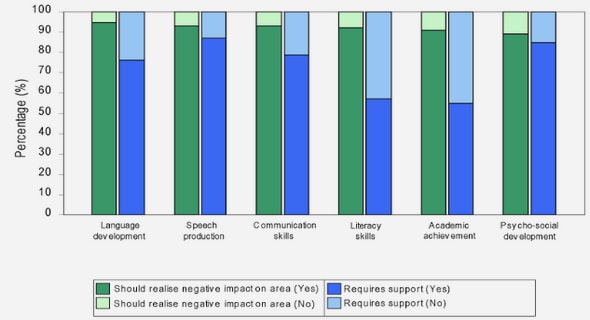(Downloads - 0)
For more info about our services contact : help@bestpfe.com
Table of contents
Chapter 1: General Introduction
1.1 Legume Family
1.1.1 Characteristics of legumes
1.1.1.1 Impact on soil and environment
1.1.1.2 Impact as food and feed
1.1.2 Protein sector in Europe
1.1.3 Legume status in France
1.1.4 Constraints for lower production
1.1.5 Need for legume improvement
1.1.6 Need for a model plant
1.2 Medicago truncatula as a model legume
1.2.1 Biological and agronomic interests
1.2.2 Synteny with legumes
1.2.3 Availability of genomic and bioinformatics tools
1.3 Seed development
1.3.1 What is seed development
1.3.1.1 Cell division phase
1.3.1.2 Seed filling and maturation phase
1.3.1.3 Dehydration phase
1.3.1.4 Proteomics of seed development
1.4 Transcriptional control of Seed development
1.4.1 Plant transcription factors
1.4.2 Transcriptional regulation of seed development
1.4.3 Role of master regulators during SSP accumulation
1.4.4 Regulatory network of seed maturation
1.4.5 Repressors of maturation-related genes
1.4.6 DOF transcription factors
1.4.6.1 Structure of DOF proteins
1.4.6.2 Role of DOF in seed filling
1.5 Hormonal control of seed development
1.5.1 Role of Auxins
1.5.2 Role of Abscisic acid
1.5.3 Role of Gibberellins
1.5.4 Role of Cytokinins
1.6 Stable genetic transformation and functional genomics
1.6.1 Gene transfer methods
1.6.1.1 Agrobacterium-mediated gene transfer
1.6.1.1.1 Agrobacterium rhizogenes
1.6.1.1.2 Agrobacterium tumefaciens
1.6.1.2 Direct gene transfer
1.6.1.2.1 Electroporation
1.6.1.2.2 Biolistics
1.6.2 Gene transfer in Medicago truncatula
1.7 Flow cytometry in plant breeding
1.8 Rationale of the thesis
1.9 Scheme of work
Chapter 2: Materials and Methods
2.1 Materials
2.1.1 Plant material and growth conditions
2.1.2 Cloning vectors, bacterial strains and primers
2.1.2.1 Plant expression vectors
2.1.2.1.1 PMDC 83 vector
2.1.2.1.2 PMDC 107 vector
2.1.2.1.3 pDONR221 vector
2.1.2.2 E coli strains
2.1.2.3 Agrobacterium tumefaciens strains
2.1.2.3.1 LBA4404:
2.1.2.3.2 EHA105:
2.1.3 Laboratory chemicals and consumables
2.1.4 Solutions, media, buffers and antibiotics
2.1.4.1 Stock Solutions
2.1.4.2 Media
2.1.4.3 Buffers
2.1.4.4 Antibiotics and selection agents
2.2 Methods
2.2.1 In silico and bioinformatic analysis
2.2.1.1 Sequence data collection
2.2.1.2 Identification of Dof family members from M. truncatula genome
2.2.1.3 Sorting of identified DOF proteins
2.2.1.4 Mapping of MtDof genes on chromosomes
2.2.1.5 Comparison of conserved residues in the Dof DNA-binding domain
2.2.1.6 Construction of Phylogenetic tree
2.2.1.7 Identification of conserved domains and duplications in Dof proteins
2.2.1.8 Analysis of cis-regulatory elements in putative target gene promoters
2.2.1.9 In silico prediction of DOF1147 subcellular localization
2.2.2 Preparation of Constructs
2.2.2.1 Primers designing
2.2.2.1.1 Calculation of annealing temperature by temperature gradient PCR
2.2.2.1.2 Designing of AttB-PCR primers
2.2.2.1.3 Amplifying attB-PCR Products
2.2.2.1.4 Agarose Gel Electrophoresis
2.2.2.1.5 Separation and purification of amplified attB-PCR Product
2.2.2.2 BP Recombination Reaction
2.2.2.2.1 Transformation of entry clone into E. Coli
2.2.2.2.2 Entry clone verification by PCR
2.2.2.2.3 Plasmid preparation from E.coli colonies
2.2.2.2.4 Sequencing of entry clones
2.2.2.3 LR Recombination Reaction
2.2.2.3.1 Expression clone verification and sequencing
2.2.3 Manipulations with Agrobacterium tumefaciens
2.2.3.1 Preparation of competent A. tumefaciens
2.2.3.2 Transformation of Agrobacteria by heat shock
2.2.3.3 Transformation of electro-competent Agrobacteria
2.2.4 Stable transformation of Medicago truncatula
2.2.4.1 Preparation of Agrobacterium culture
2.2.4.2 Preparation of explants
2.2.4.3 Inoculation of explants
2.2.4.4 Co-cultivation of explants
2.2.4.5 Callus induction and somatic embryogenesis
2.2.5 Analysis of putative transformants
2.2.5.1 Flow cytometric analysis of putative transformants
2.2.5.2 Molecular verification of putative transformants
2.2.5.2.1 Genomic DNA extraction
2.2.5.2.2 Verification of transformants by Polymerase Chain Reaction
2.2.5.3 Germination and transgene segregation test in the progeny
2.2.6 Transient expression assays
2.2.6.1 Transient expression in Nicotiana tabacum through agro-infiltration
2.2.7 Microscopic studies
2.2.7.1 Laser scanning confocal microscopy
2.2.7.2 Fluorescence microscopy
Chapter 3: Genome wide identification of DOF transcription factors in M. truncatula and in silico promoter analysis
3.1 Introduction
3.2 In-silico subcellular localization of DOF1147
3.3 Genome wide identification of MtDof family members
3.4 New annotations of M. truncatula Dof genes
3.5 Mapping MtDOF genes on M. truncatula chromosomes
3.6 Comparison of DNA-binding Dof domains of MtDofs
3.7 Phylogenetic analysis of Dof proteins
3.8 Analysis of conserved domains and gene duplications
3.9 In silico motif analysis of putative target gene promoters
Chapter 4: Agrobacterium-tumefaciens mediated transformation of M. truncatula and expression studies of DOF1147
4.1 Introduction
4.2 Results
4.2.1 Use of Gateway cloning technology for preparation of constructs
4.2.1.1 Preparation of promoter reporter construct (pdof::gfp)
4.2.1.2 Preparation of translational fusion construct (p35S::dof-gfp)
4.2.2 Transformation of expression clones into A. tumefaciens
4.3 Genetic transformation of Medicago truncatula
4.3.1 Generation of pdof::gfp cassette containing plants
4.3.1.1 Verification of pdof::gfp cassette at molecular level
4.3.2 Generation of 35S::dof-gfp cassette containing plants
4.3.2.1 Verification of 35S::dof-gfp cassette at molecular level
4.3.3 Comparison of transformation efficiency
4.3.4 Flow cytometric characterization of transformants
4.3.5 Phenotyping of transformants
4.3.6 Transgene segregation in the progeny
4.4 Laser scanning confocal microscopy
4.4.1 Subcellular localization of Dof1147
4.4.2 DOF1147 subcellular localization studies using Agroinfiltration
4.4.3 Expression of Dof1147 during seed development
Chapter 5: Role of auxin in in vitro seed development in M. truncatula
5.1 Introduction
5.2 In vitro auxin treatment promotes cell division and delays endoreduplication in developing seeds of the model legume species Medicago truncatula.
5.2.1 Abstract
5.2.2 Introduction
5.2.3 Materials and methods
5.2.3.1 In vitro culture
5.2.3.2 Determination of seed size, fresh weight and viability
5.2.3.3 Flow cytometry
5.2.4 Results
5.2.4.1 Development on auxin-free medium (MS130)
5.2.4.2 Effect of auxin on seed size
5.2.4.3 Effect of auxin on seed fresh weight
5.2.4.4 Flow cytometry of in vitro developing immature seeds
5.2.5 Discussion
Chapter 6: General Discussion
6.1 Construction of plant transformation vectors using Gateway technology
6.2 Stable genetic transformation of M. truncatula
6.3 Genome-wide identification of MtDOF TFs and their phylogenetic analysis
6.4 Expression of Dof1147 in the seed endosperm
6.5 Subcellular localization of Dof1147 protein
6.6 Role of auxin in seed development
Conclusions and Perspectives



